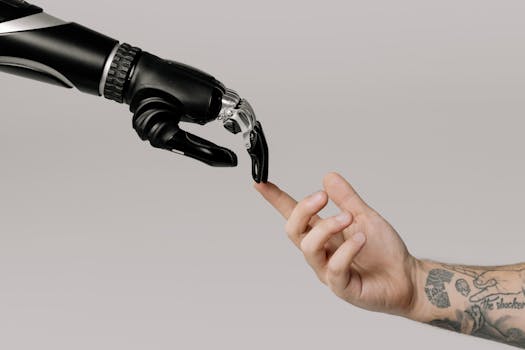How Open Source Philosophy Built the Foundation for AI’s Evolution
The Roots of Rebellion: How Open Source Philosophy Built the Foundation for AI’s Evolution The Open Source Revolution: How Collaboration is Shaping the Future of AI and Global Power DynamicsThis is Part 1 of a 4-part series where we explore how the ethos of open-source software—transparency, community, and democratization—has become the backbone of AI innovation, reshaping industries, corporate strategies, and the geopolitical rivalry between the U.S. and China. From a personal passion project to ChatGPT: The unlikely marriage of countercultural ideals and cutting-edge AI. In 1991, a 21-year-old Finnish student named Linus Torvalds released the Linux kernel, a free alternative to proprietary operating systems. Three decades later, open-source principles power everything from smartphones to AI models like ChatGPT. This is the story of how a grassroots movement—built on collaboration, transparency, and defiance of corporate control—became the backbone of modern technology. How do we Monetize Open-Source? Check out Part 2 in our 4-Part series on Open-Source Economy. Why It Matters Open-source software now underpins 96% of enterprise IT systems and drives AI innovation. Yet its rise was neither inevitable nor peaceful. From ideological battles over “free software” to corporate co-opting of community projects, the movement’s history reveals a tension between idealism and pragmatism—a tension now shaping the future of AI. History & Milestones Flashback: “Free as in speech, not free as in beer”—Stallman’s “mantra” emphasized liberty over cost. Software like Linux is considered “free as in speech” because users have the freedom to use, copy, modify, and redistribute it. On the other hand, freeware is often “free as in beer” because it is provided without charge but may not grant the same freedoms to the user to modify or redistribute it. (see source) 1990’s: Linux and the Open-Source Revolution Between the Lines: Open source succeeded by appealing to businesses—not just activists. 2000’s-2010’s: Mainstream Adoption Key Milestone: By 2025, 96% of organizations will use open-source tools, driven by cost savings (53%) and innovation. Cultural Pillars: The DNA of Open Source Yes, But: Critics argue corporate giants like Microsoft (GitHub) and Google (TensorFlow), both open source, now hold outsized influence. Their dominance raises questions about the potential concentration of power within these two companies and its implications for competition and innovation. AI Adoption: Lowering Barriers, Raising Stakes Open-source culture democratized AI development: Case Study: TensorFlow and PyTorch dominate AI research because they’re free, flexible, and community-driven. Modern Challenges: Idealism vs. Pragmatism What’s Next: The Open-Source Paradox—Community Ideals Built a $30B Industry The open-source movement’s greatest achievement lies in its paradoxical fusion of communal innovation and capitalist pragmatism. By transforming software from walled-garden products into a global public good, it democratized access to technology while spawning a $30B+ industry. Yet its future hinges on resolving a core tension: Can profit-driven giants like Microsoft and Google coexist with the anti-monopoly ethos that birthed Linux? As AI becomes the next battleground, this question grows urgent—and the stakes are nothing less than who controls the infrastructure of the modern world. What’s Next in Part 2: How do companies like Red Hat and Hugging Face turn “free” code into billion-dollar empires? From enterprise support to AI inference APIs, we dissect the art of monetizing collaboration—and ask whether the open-source dream can survive its own success. Fast Facts More on AI and Other GabeeCulture Topics
How Open Source Philosophy Built the Foundation for AI’s Evolution Read Post »


